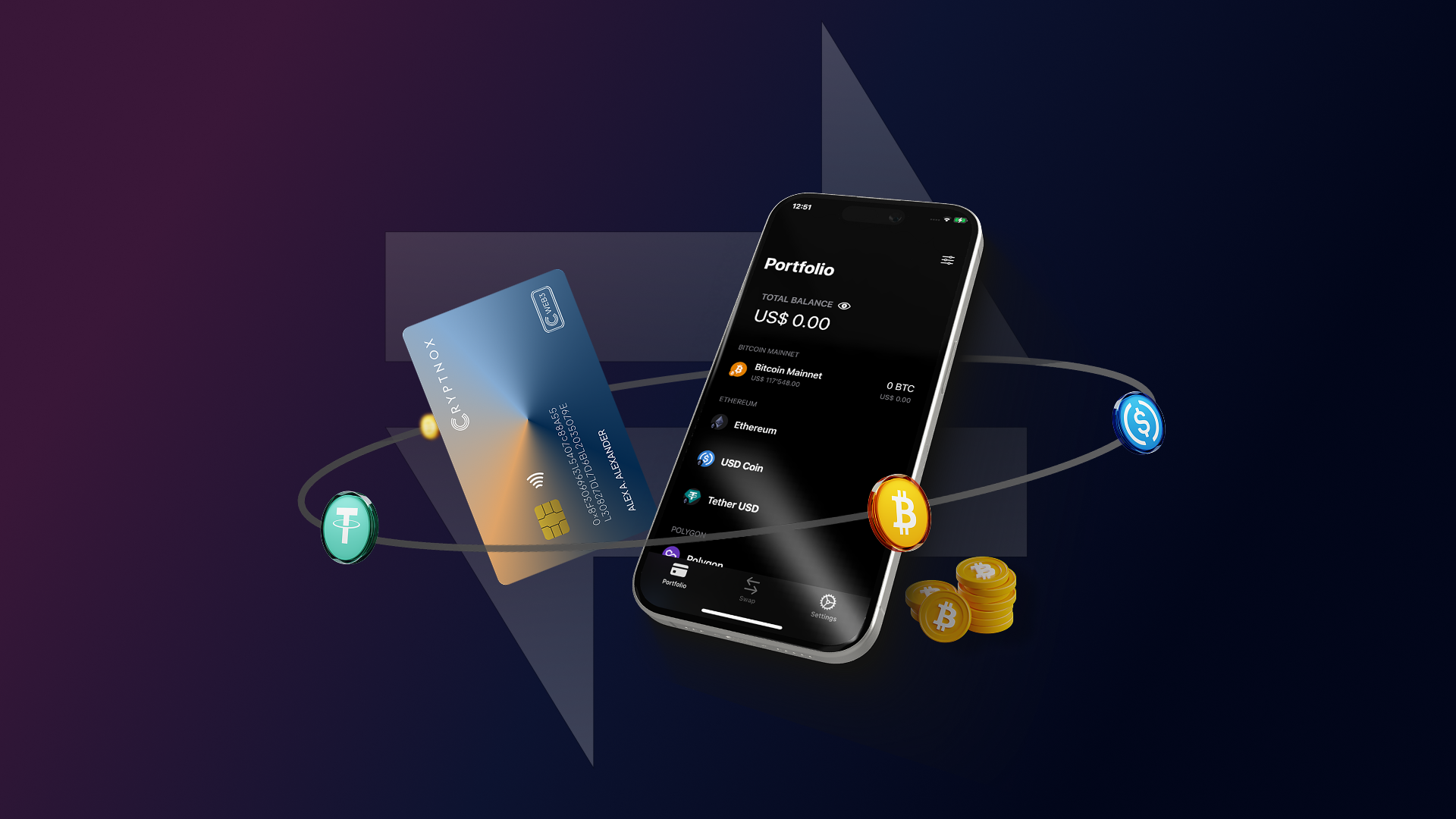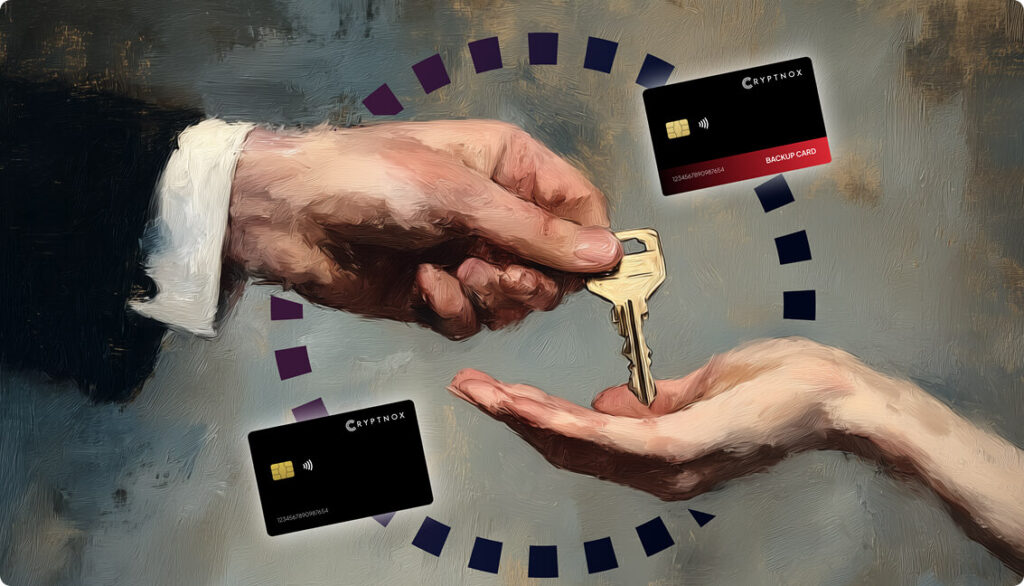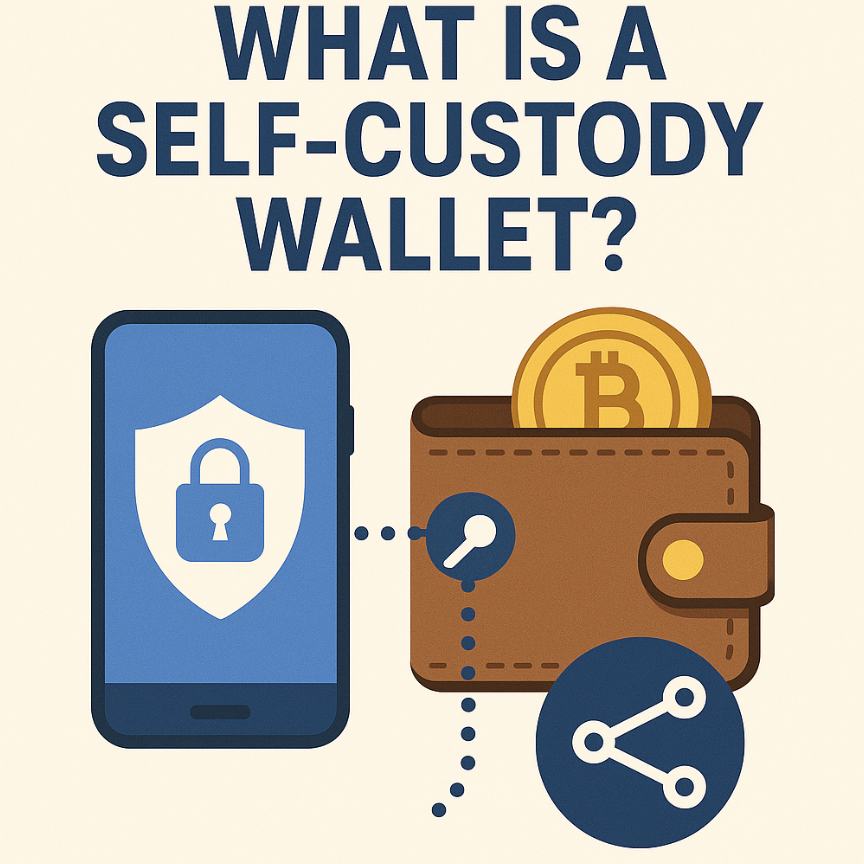Fraud associated with card payments continues to be a multi-billion dollar problem for both businesses and consumers. For all the advances in digital payment systems and the investment in fraud prevention technologies over the years, the traditional card payment systems still face the fundamental challenge of using a shared secret paradigm. This system of using a card number, CVV, and an expiration date centers around the “security through obscurity” concept. These details, once exposed in any way, can be reused by attackers at a global scale.
What if, however, payments did not need any secrets? What if users could authorize transactions via unforgeable cryptographic signatures, independent of any bank, payment network, or processor?
Blockchain payments and hardware wallets remove the need for cards and banks, and in the process, third party payment processors. This payment evolution is powered by Cryptnox, which is offering cutting-edge smartcard based hardware wallets and is eliminating the vulnerabilities of traditional systems to advance secure payments with advanced smartcard based hardware wallets.
Embracing Modern Payment Methods
As Cryptnox advances smart card hardware payment systems, the rest of the world is still lagging behind. Like traditional card networks, the Internet was never part of their system design. The risk of fraud is at an all-time high. In one of their reports, the business world estimates that card-not-present (CNP) is one of the leading causes of fraud. Contributing to well above 80% of all card fraud.
Within regulations, such as the Strong Customer Authentication (SCA) in the EU, still fraudsters find ways to circumvent fraud prevention measures. We have witnessed large scale hacks of known firms which resulted in the leaking of millions of card details. This undermines the notion that encryption or compliance is sufficient to safeguard any data that is inherently vulnerable.
Why? Because the traditional card systems adhere to the outdated practice of circulating sensitive data. This is done through the user, the merchant, the processor, and finally the bank. Each stage adds to the weak point, resulting in increased risk for data exposure.
Blockchain: Rewriting the Rules of Payments
Blockchain technology and payments provide radical solutions to these issues. Unlike traditional payments which require payment authentication via card number transmission, blockchain payments validate transactions through the user’s private key. This confirms the user’s identity without the need to expose any sensitive data.
Here is a simplified explanation of how the system works:
-
- Payment is initiated directly through a blockchain wallet and not through a card network.
-
- Instead of a credentials transfer, the user initiates a transaction and is authenticated through a signature via a private key which is housed in a hardware wallet.
-
- These signature transactions are independently verified and added to a ledger that is irrefutable and publicly accessible.
-
- Funds are directly exchanged and are usually stablecoins such as USDC or EURC. There is no need for banks and payment gateways in the transaction.
This approach simultaneously removes numerous fraud vectors. There is no information to steal, no credentials to skim, and no third parties to breach.
Why Cryptnox Hardware Wallets Are a Game-Changer?
The hardware wallet is the cornerstone of this protective architecture. It is a physical device that stores private keys in a segregated, tamper-proof environment. Cryptnox brings this power to users in the form of smartcards, blending user experience and convenience with industry-leading security.
Unlike software wallets that operate on security-hazardous devices such as phones and laptops, Cryptnox hardware wallets shield the private key. The signing is performed within the card’s secure element, and thus, the key is never exposed to internet-connected environments.
These smartcards are built using C-WAAS (Card Wallet as a Service) and boast the following functionalities:
-
- Biometric and PIN access login for two-factor verification.
-
- FIDO2 token support for secure website login.
-
- EMV for interactive and contactless point of sale.
-
- Offline ability to sign transactions in air-gapped environments.
Since all signing of transactions is performed within the secure chip, no attacker, even with physical access, can retrieve the key. Without the key, producing a signature is impossible.
Transitioning from Trust to Math
Traditional card systems use trusted third parties such as banks, acquirers, and card networks to validate transactions and handle fraud claim disputes. In contrast, blockchain systems utilize trustless security, which relies on institutional trust.
When a user authorizes a blockchain transaction using a Cryptnox hardware wallet, the system checks the on-chain verification of the digital signature. If the Cryptnox signature checks out against the user’s public key, the transaction goes through. This system guarantees no intermediaries and occurs in less than real time.
This approach also minimizes the avenues of attack. Phishing and credential stuffing, for example, are rendered irrelevant in the absence of data and the means of reuse. Even the most sophisticated attempts, such as faking a website to trick the user, fail because transaction authorization requires the card itself, the access PIN, and physical presence to claim the card.
Shifts of Responsibility in a Decentralized Setting
Blockchain and hardware wallets enhance security, but these innovations place the onus of responsibility for security on the user’s shoulders. As with other hardware wallets, users will have to safeguard the device and be cautious about what they sign on the blockchain.
Some associated risks are:
-
- Loss of funds through lost private keys with no backup.
- Unchecked user approval for transactions through phishing websites and other scams.
- Poor smart contract code might lead to unintended actions and bugs.
- Loss of funds through lost private keys with no backup.
This is why Cryptnox’s hardware wallets are very important: they safeguard multi-tiered precautions, which ensure that only predetermined and sanctioned decisions are executed.
The Road Ahead: Safer Payments at Scale
As global payments transition to the digital realm, the shortcomings of old-fashioned cards become increasingly evident. The hardware wallets and blockchain payments offer an alternative that is neither niche nor lacks merit; they are an innovative, secure, and scalable solution that grants users autonomy over the movement of funds.
With hardware wallets from Cryptnox, individuals and institutions can finally address payment fraud at its core. Rather than responding to payment fraud with a system of fraud detection, fraud insurance, alerts, and chargebacks, we can eliminate payment fraud at the source.
Why Choose Cryptnox?
Cryptnox is dedicated to providing the market with the best hardware wallet solutions in terms of security, reliability, and ease of use. Our smartcard-based hardware wallets offer the accessibility of a card form factor while providing the security assurance of blockchain cryptography.
Our offerings are focused on enabling the next generation of digital finance to be forged in a world unabated by fraud, offering secure logins, digital payments, decentralized identities, and cold storage.




